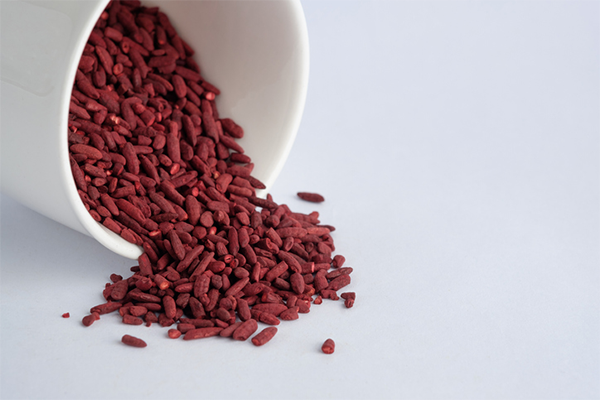Red Yeast Rice: What It Is, Benefits, and Side Effects

Whether you’re interested in natural remedies or just looking for ways to support your health, you may have heard about red yeast rice.
This dietary supplement is believed to have an impact on heart health — but does it actually work? And is it safe?
Here’s a quick rundown on some potential benefits and risks you should consider.
What Is Red Yeast Rice?
Red yeast rice is a type of fermented rice product. “Red yeast rice is a supplement created from Monascus purpureus yeast that is grown on rice,” says Kelly Bay, DC, CNS, CDN, a chiropractor and certified dietitian nutritionist based in Manhattan.
It’s also a staple in traditional Chinese medicine because it can contain some monacolin K, which is a statin that’s chemically similar to certain medically approved statin medications. (However, it’s important to note that monocolin K is not a medically approved statin.)
Because of this chemical similarity, the FDA considers monacolin K to be an “unapproved drug.” Any product containing more than trace amounts of monacolin K is banned from being marketed as a dietary supplement in the U.S.
Apart from its potential medicinal properties, red yeast rice has been used to add color and flavor to dishes like Peking duck and char siu (a.k.a. Chinese barbecue pork) for hundreds of years. Red yeast rice is sometimes known as red yeast koji, the Japanese word for a starter culture used to make fermented foods like miso paste.
Red Yeast Rice Benefits
Red yeast rice is believed to have a number of benefits. But before deciding whether to try red yeast rice supplements — or any new supplement, for that matter — talk to a health care professional to discuss proper use and potential risks.
Here are a couple reported benefits of red yeast rice.
It may support heart health
Red yeast rice is believed to impact heart health and has been used in traditional Chinese medicine for centuries. However, there are some serious side effects to consider, and more research is needed to determine whether the benefits outweigh the risks.
It contains antioxidant-like compounds
Red yeast rice is a source of astaxanthin, a crimson-colored carotenoid that is believed to have healthy benefits. Some research suggests red yeast rice may be associated with healthy cell growth, but Bay notes that “human studies regarding this are very limited, and additional research is needed to fully evaluate this potential.”
Red Yeast Rice Side Effects
Because monacolin K is chemically similar to a statin drug, red yeast rice can potentially cause similar side effects, Bay says. Side effects may include:
- Gas
- Headache
- Heartburn
- Increased liver enzymes
- Muscle weakness/pain
- Sleep disturbances
- Rhabdomyolysis (a breakdown of muscle tissue that may lead to kidney issues)
Side effects can be hard to predict, because monacolin K levels can vary so widely depending on the brand or formulation. “There’s no way to know exactly how much monacolin K is in the product,” says Tina Marinaccio, MS, RD, who offers nutrition counseling and cooking classes in the greater New York City area.
One more risk to consider: Some red yeast rice supplements have been found to contain a mycotoxin called citrinin, which may negatively affect the kidneys and liver, Bay says.
Before you buy red yeast rice, consider these questions:
- How is the supplement made? Is it tested to be free of citrinin?
- Is it processed without harmful solvents or other additives?
- Is the company reputable?
- Are they making claims about monacolin K? (Supplement companies have to adhere to industry standards for all claims, which are regulated by the FDA and the Federal Trade Commission.)
Always choose high-quality dietary supplements, and talk to your doctor before trying a new supplement.
Source link
#Red #Yeast #Rice #Benefits #Side #Effects




